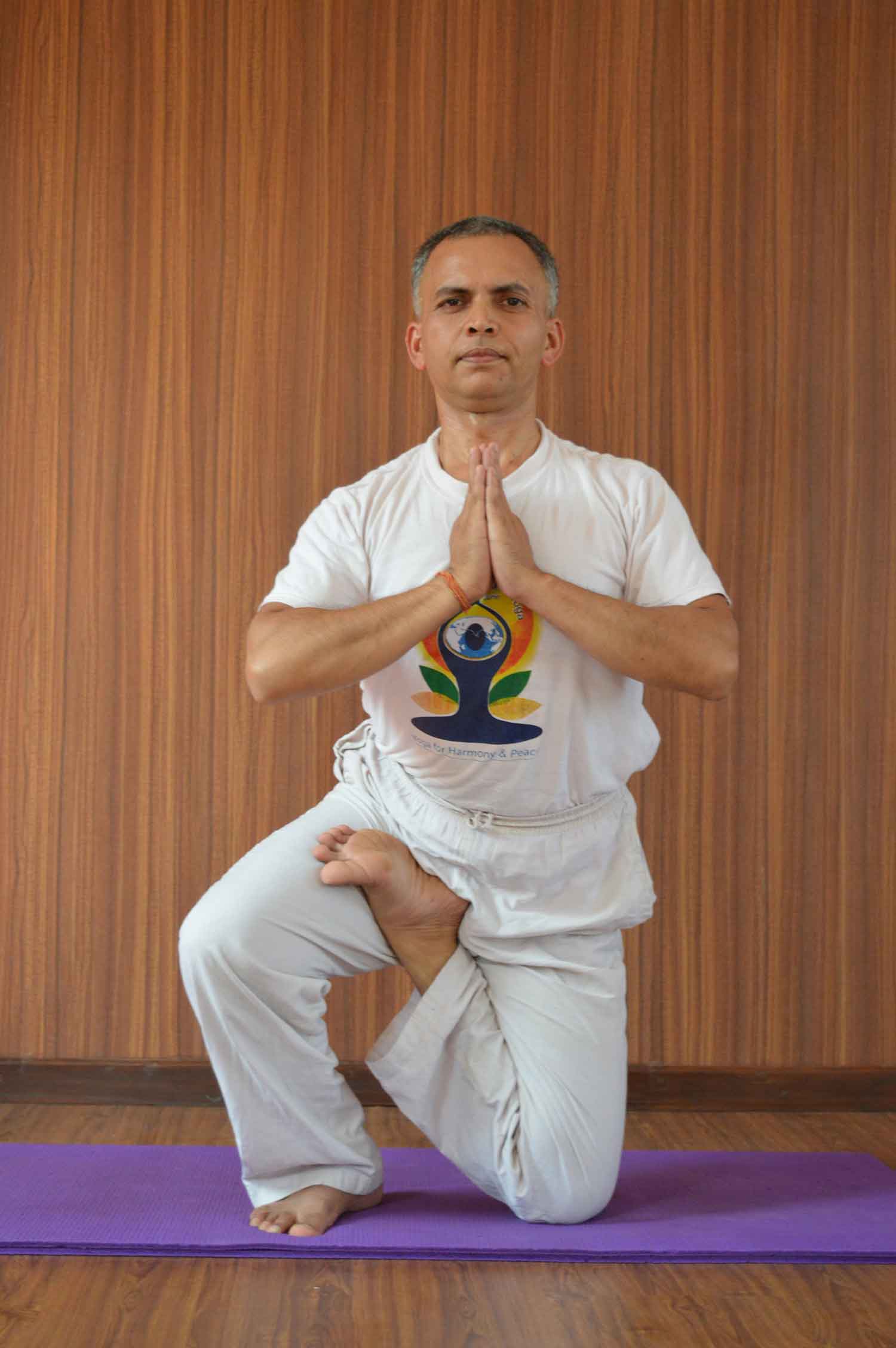
31 Dec 2020 HYN Himalayan Yoga Academy
Vaamoru-moola-deshe cha Yaamyam Paadam Nidhaaya Vai;
Tishthettu Vrikshavad-bhoomau Vrikshaasana-midam Viduh. !!G.S.2.36!!
Place the right foot at the root of the left thigh and stand straight on the ground like a tree. This is called Vrikshasana. But it is not commonly named by Vatayanasana (Flying Horse Pose) or Dhrubasana (Sage/star Dhruba Aasana). It is the balancing Aasana. It balances both body and mind.
Vrikshasana Meaning
Vrikshasana is taken from the Sanskrit word Vriksha (वृक्षासन). It comprises two words: Vriksha means tree and asana indicating a Yogic posture. If somebody pronounced Vrikshasana, it should be as vrik-shah-sana. While performing, it gives the true spirit of the tree, thus named as tree pose. “Stand erect on the left leg, bend the right leg, and place the right foot on the root of the right thigh. Maintain the pose like a tree on the ground. This is called Vriksha-asana” Gheranda-samhita II.36.
This asana requires the practitioner to stand on one leg with the other leg bent so the foot rests on the inside of the thigh. The hands are extended overhead with palms touching.
How to perform Tree pose
Here, the step by step practicing techniques is being mentioned, especially for the beginners so that they become master of the pose.
- Stand erect. Keep the feet together.
- Fold the right leg and placed it at the top of the left thighs with the toes of the right leg should point downwards.
- The right leg should perpendicular to the left leg.
- Extend your arms above your head.
- Inhale and try to make Namaskar mudra with your palms.
- Balance the pose as long as you can because balancing is of utmost importance in the Tree pose.
- Try to make your spine straight and feel the stretching from toes to fingers.
- With a deep exhale bring your arms and leg down.
- Repeat the same with the left leg. It completes one round.
- Do three-five rounds.
How to do the Tree Pose (Vrikshasana) in Gheranda Samhita
- Stand tall and straight with arms by the side of your body
- Bend your right knee and place the right foot high up on your left thigh in the half lotus position.
- Make sure that your left leg is straight. Stand steadily like a tree and find your balance.
- Place the palms of the hands together in front of the chest in pranam mudra or, ‘Namaskaara’ mudra (hands-folded position) like as Dhrubasana.
- Once you are well balanced, take a deep breath in, gracefully raise your arms over your head from the side, and bring your palms together in ‘Namaskaara’ mudra (hands-folded position).
- Look straight ahead in front of you at a distant object. A steady gaze helps maintain a steady balance.
- Ensure that your spine is straight and the entire body should be taut, like a stretched elastic band.
- Keep taking in long, deep breaths.
- With each exhalation, relax the body more and more. Just be with the body and the breath with a gentle smile on your face.
- With slow exhalation, gently bring down your hands from the sides and gently release the right leg.
- Repeat this pose with the left leg off the ground on the right thigh.
Anatomy
Vrikshasana benefits the following muscles and hence can be included in yoga sequences with the corresponding muscle(s) focus: Hamstrings, Hips, Knees, Quadriceps, vertebral column, and spine cord.
Vrikshasana yoga sequences
- Stretching exercise series
- Balancing Exercises series
- Kids yoga sequences
- Prenatal and Postnatal yoga sequences
- Teens Yoga sequences
- Hip-opening yoga sequences
Benefits of the Vrikshasana / Tree Pose
- It stretches the entire body from toes to fingers, thus invigorates you.
- Gives tranquility to your mind, thus good for those who are facing the problem of depression and anxiety. It calms and relaxes the central nervous system.
- It increases your stamina, concentration, and immunity; develops esteem and self-confidence.
- This pose leaves you in a state of rejuvenation.
- It stretches the legs, back, arms and his posture has been found to relieve some cases of sciatica.
- Brings balance and equilibrium to your mind; makes you more focused and concentrated.
- It makes the legs strong, improves balance, and opens the hips.
- But one should practice it under the supervision of a yoga expert.
- It enhances the flexibility of legs, back; chest muscles; strengthens the ligaments and tendon of the feet.
- It makes your ankle stronger and improves balance and stability in the legs.
- Strengthens and tones the entire standing leg, up to the buttocks; Assists the body in establishing pelvic stability; Strengthen the bones of the hips and legs due to the weight-bearing nature of the pose
- It strengthens thighs and calves; It gives suitable stretching to the groins.
- People suffering from flat feet should practice it.
- It helps to cure rheumatic pain and also treats numbness.
- Helps relieve premenstrual symptoms like leg cramps and abdominal cramps.
Contraindications of the Tree Pose (Vrikshasana)
Avoid doing this posture if you are suffering from migraine, insomnia, or low or high blood pressure. (Those with high blood pressure may do this pose but without raising their hands overhead, as this may further raise their blood pressure).
It should not be practiced in case of High blood pressure, Low blood pressure, Migraine, Insomnia, Acute knee problems, Hip injury
Vrikshasana Variations

Below are some common variations of the yoga pose Vrikshasana with the base pose as Tree Pose (Vrikshasana).
- Beginner Tree Pose
- Half Lotus Tree Pose
- Palm Tree Pose Variation Elbows
- Double Tree Pose
